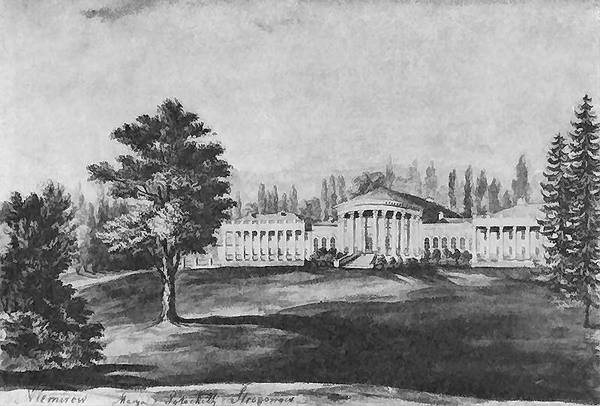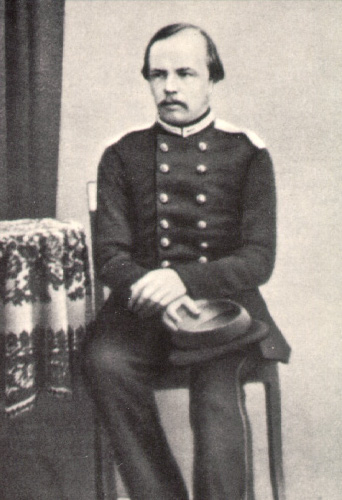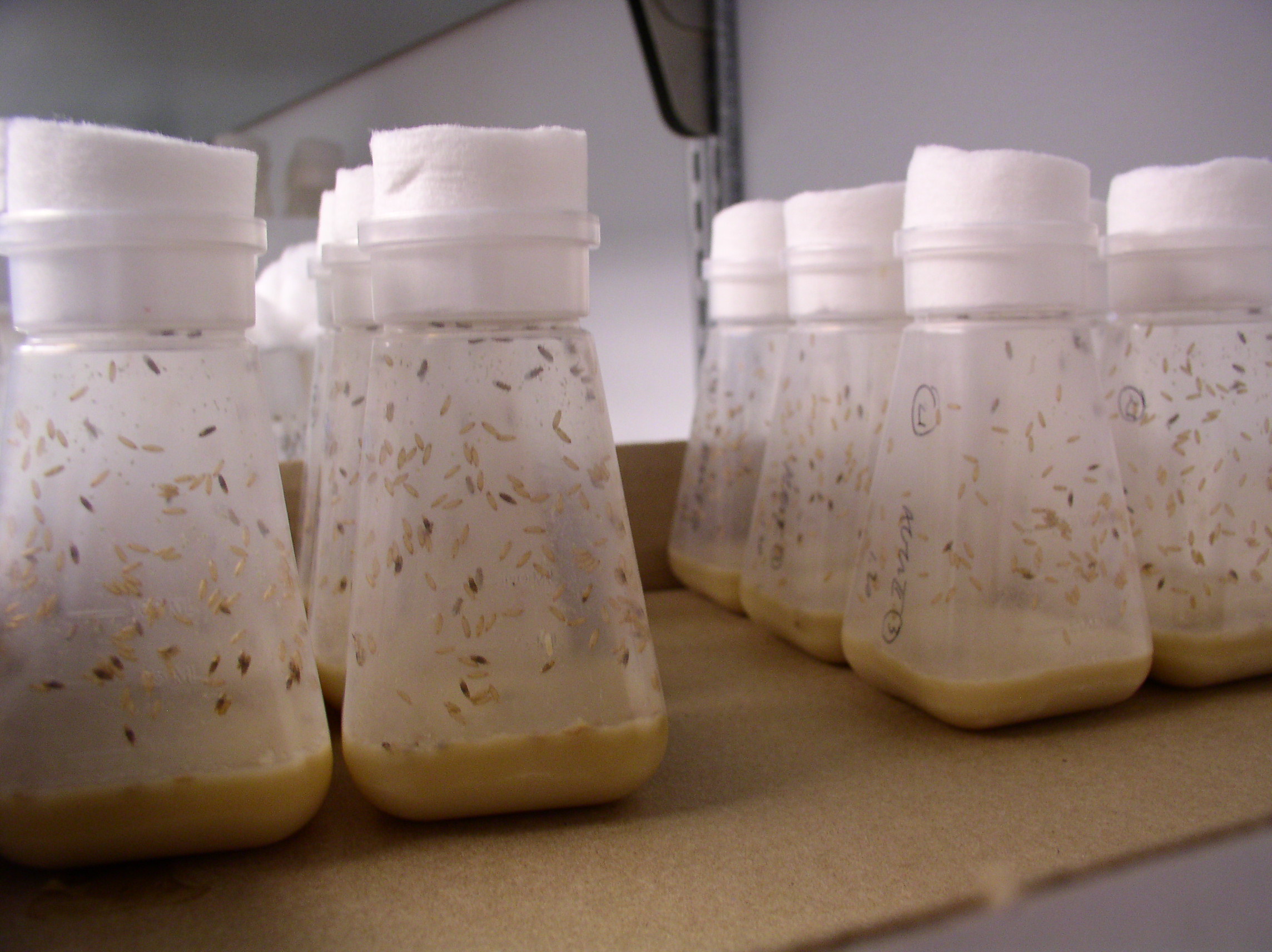|
T. Dobzhansky
Theodosius Grigorievich Dobzhansky (russian: ążąĄąŠą┤ąŠ╠üčüąĖą╣ ąōčĆąĖą│ąŠ╠üčĆčīąĄą▓ąĖčć ąöąŠą▒čƹȹ░╠üąĮčüą║ąĖą╣; uk, ąóąĄąŠą┤ąŠ╠üčüč¢ą╣ ąōčĆąĖą│ąŠ╠üčĆąŠą▓ąĖčć ąöąŠą▒čƹȹ░╠üąĮčüčīą║ąĖą╣; January 25, 1900 ŌĆō December 18, 1975) was a prominent Russian-American geneticist and evolutionary biologist, and a central figure in the field of evolutionary biology for his work in shaping the modern synthesis. Born in the Russian Empire, Dobzhansky emigrated to the United States in 1927, aged 27. He was a distant relation of the Russian writer Feodor Dostoevsky. His 1937 work '' Genetics and the Origin of Species'' became a major influence on the modern synthesis. He was awarded the US National Medal of Science in 1964 and the Franklin Medal in 1973. Biography Early life Dobzhansky was born on January 25, 1900, in Nemirov, Russian Empire (now Nemyriv, Ukraine), the only child of Grigory Dobzhansky, a mathematics teacher, and Sophia Voinarsky. He was given a rare name, Theodosius, be ... [...More Info...] [...Related Items...] OR: [Wikipedia] [Google] [Baidu] |
Nemyriv
Nemyriv ( uk, ąØąĄą╝ąĖčĆč¢ą▓, russian: ąØąĄą╝ąĖčĆoą▓, pl, Niemir├│w) is a historic town in Vinnytsia Oblast (province) in Ukraine, located in the historical region of Podolia. It was the administrative center of former Nemyriv Raion (district). Population: Nemyriv is one of the oldest cities in Vinnytska oblast, Ukraine. It was founded by Prince Nemyr in 1390. It is a minor industrial center. The distiller company that produces Ukrainian Nemiroff (Russian spelling) vodka is located in Nemyriv. The town's tourist attractions include a late 19th-century palace (which belonged to the House of Potocki) and a park complex. History Nemyriv was built on the site of ancient Scythian settlement Myriv, destroyed during the Mongol invasion of Rus'. It was first mentioned under its modern name in 1506, which ultimately derives from the Slavic given name Niemir. It was a private town of Poland, owned by the families of Zbaraski and Potocki. Polish King Stanis┼éaw August Poniatowski v ... [...More Info...] [...Related Items...] OR: [Wikipedia] [Google] [Baidu] |
Guggenheim Fellowship
Guggenheim Fellowships are grants that have been awarded annually since by the John Simon Guggenheim Memorial Foundation to those "who have demonstrated exceptional capacity for productive scholarship or exceptional creative ability in the arts." Each year, the foundation issues awards in each of two separate competitions: * One open to citizens and permanent residents of the United States and Canada. * The other to citizens and permanent residents of Latin America and the Caribbean. The Latin America and Caribbean competition is currently suspended "while we examine the workings and efficacy of the program. The U.S. and Canadian competition is unaffected by this suspension." The performing arts are excluded, although composers, film directors, and choreographers are eligible. The fellowships are not open to students, only to "advanced professionals in mid-career" such as published authors. The fellows may spend the money as they see fit, as the purpose is to give fellows "bl ... [...More Info...] [...Related Items...] OR: [Wikipedia] [Google] [Baidu] |
Ukraine
Ukraine ( uk, ąŻą║čĆą░茹Įą░, Ukra├»na, ) is a country in Eastern Europe. It is the second-largest European country after Russia, which it borders to the east and northeast. Ukraine covers approximately . Prior to the ongoing Russian invasion, it was the eighth-most populous country in Europe, with a population of around 41 million people. It is also bordered by Belarus to the north; by Poland, Slovakia, and Hungary to the west; and by Romania and Moldova to the southwest; with a coastline along the Black Sea and the Sea of Azov to the south and southeast. Kyiv is the nation's capital and largest city. Ukraine's state language is Ukrainian; Russian is also widely spoken, especially in the east and south. During the Middle Ages, Ukraine was the site of early Slavic expansion and the area later became a key centre of East Slavic culture under the state of Kievan Rus', which emerged in the 9th century. The state eventually disintegrated into rival regional po ... [...More Info...] [...Related Items...] OR: [Wikipedia] [Google] [Baidu] |
Genetics And The Origin Of Species
''Genetics and the Origin of Species'' is a 1937 book by the Ukrainian-American evolutionary biologist Theodosius Dobzhansky. It is regarded as one of the most important works of the modern synthesis, and was one of the earliest. The book popularized the work of population genetics to other biologists, and influenced their appreciation for the genetic basis of evolution. In his book, Dobzhansky applied the theoretical work of Sewall Wright (1889ŌĆō1988) to the study of natural populations, allowing him to address evolutionary problems in a novel way during his time. Dobzhansky implements theories of mutation, natural selection, and speciation throughout his book to explain habits of populations and the resulting effects on their genetic behavior. The book explains evolution in depth as a process over time that accounts for the diversity of all life on Earth. The study of evolution was present, but greatly neglected at the time. Dobzhansky illustrates that evolution regarding the or ... [...More Info...] [...Related Items...] OR: [Wikipedia] [Google] [Baidu] |
Feodor Dostoevsky
Fyodor Mikhailovich Dostoevsky (, ; rus, ążčæą┤ąŠčĆ ą£ąĖčģą░ą╣ą╗ąŠą▓ąĖčć ąöąŠčüč鹊ąĄą▓čüą║ąĖą╣, Fy├│dor Mikh├Īylovich Dostoy├®vskiy, p=╦łf╩▓╔Ąd╔Ör m╩▓╔¬╦łxajl╔Öv╩▓╔¬d╩æ d╔Öst╔É╦łjefsk╩▓╔¬j, a=ru-Dostoevsky.ogg, links=yes; 11 November 18219 February 1881), sometimes transliterated as Dostoyevsky, was a Russian novelist, short story writer, essayist and journalist. Dostoevsky's literary works explore the human condition in the troubled political, social, and spiritual atmospheres of 19th-century Russia, and engage with a variety of philosophical and religious themes. His most acclaimed novels include ''Crime and Punishment'' (1866), ''The Idiot'' (1869), ''Demons'' (1872), and ''The Brothers Karamazov'' (1880). His 1864 novella, ''Notes from Underground'', is considered to be one of the first works of existentialist literature. Numerous literary critics regard him as one of the greatest novelists in all of world literature, as many of his works are considered highly influent ... [...More Info...] [...Related Items...] OR: [Wikipedia] [Google] [Baidu] |
Biographical Memoirs Of Fellows Of The Royal Society
The ''Biographical Memoirs of Fellows of the Royal Society'' is an academic journal on the history of science published annually by the Royal Society. It publishes obituaries of Fellows of the Royal Society. It was established in 1932 as ''Obituary Notices of Fellows of the Royal Society'' and obtained its current title in 1955, with volume numbering restarting at 1. Prior to 1932, obituaries were published in the ''Proceedings of the Royal Society''. The memoirs are a significant historical record and most include a full bibliography of works by the subjects. The memoirs are often written by a scientist of the next generation, often one of the subject's own former students, or a close colleague. In many cases the author is also a Fellow. Notable biographies published in this journal include Albert Einstein, Alan Turing, Bertrand Russell, Claude Shannon, Clement Attlee, Ernst Mayr, and Erwin Schr├Čdinger. Each year around 40 to 50 memoirs of deceased Fellows of the Royal Society a ... [...More Info...] [...Related Items...] OR: [Wikipedia] [Google] [Baidu] |
Modern Synthesis (20th Century)
The modern synthesis was the early 20th-century synthesis of Charles Darwin's theory of evolution and Gregor Mendel's ideas on heredity into a joint mathematical framework. Julian Huxley coined the term in his 1942 book, '' Evolution: The Modern Synthesis''. The synthesis combined the ideas of natural selection, Mendelian genetics, and population genetics. It also related the broad-scale macroevolution seen by palaeontologists to the small-scale microevolution of local populations. The synthesis was defined differently by its founders, with Ernst Mayr in 1959, G. Ledyard Stebbins in 1966, and Theodosius Dobzhansky in 1974 offering differing basic postulates, though they all include natural selection, working on heritable variation supplied by mutation. Other major figures in the synthesis included E. B. Ford, Bernhard Rensch, Ivan Schmalhausen, and George Gaylord Simpson. An early event in the modern synthesis was R. A. Fisher's 1918 paper on mathematical population geneti ... [...More Info...] [...Related Items...] OR: [Wikipedia] [Google] [Baidu] |
Evolutionary Biology
Evolutionary biology is the subfield of biology that studies the evolutionary processes ( natural selection, common descent, speciation) that produced the diversity of life on Earth. It is also defined as the study of the history of life forms on Earth. Evolution is based on the theory that all species are related and they gradually change over time. In a population, the genetic variations affect the physical characteristics i.e. phenotypes of an organism. These changes in the phenotypes will be an advantage to some organisms, which will then be passed onto their offspring. Some examples of evolution in species over many generations are the Peppered Moth and Flightless birds. In the 1930s, the discipline of evolutionary biology emerged through what Julian Huxley called the modern synthesis of understanding, from previously unrelated fields of biological research, such as genetics and ecology, systematics, and paleontology. The importance of studying Evolutionary bio ... [...More Info...] [...Related Items...] OR: [Wikipedia] [Google] [Baidu] |
Evolutionary Biologist
Evolutionary biology is the subfield of biology that studies the evolutionary processes (natural selection, common descent, speciation) that produced the diversity of life on Earth. It is also defined as the study of the history of life forms on Earth. Evolution is based on the theory that all species are related and they gradually change over time. In a population, the genetic variations affect the physical characteristics i.e. phenotypes of an organism. These changes in the phenotypes will be an advantage to some organisms, which will then be passed onto their offspring. Some examples of evolution in species over many generations are the Peppered Moth and Flightless birds. In the 1930s, the discipline of evolutionary biology emerged through what Julian Huxley called the modern synthesis of understanding, from previously unrelated fields of biological research, such as genetics and ecology, systematics, and paleontology. The importance of studying Evolutionary biology is ma ... [...More Info...] [...Related Items...] OR: [Wikipedia] [Google] [Baidu] |
Geneticist
A geneticist is a biologist or physician who studies genetics, the science of genes, heredity, and variation of organisms. A geneticist can be employed as a scientist or a lecturer. Geneticists may perform general research on genetic processes or develop genetic technologies to aid in the pharmaceutical or and agriculture industries. Some geneticists perform experiments in model organisms such as ''Drosophila'', ''C. elegans'', zebrafish, rodents or humans and analyze data to interpret the inheritance of biological traits. A basic science geneticist is a scientist who usually has earned a PhD in genetics and undertakes research and/or lectures in the field. A medical geneticist is a physician who has been trained in medical genetics as a specialization and evaluates, diagnoses, and manages patients with hereditary conditions or congenital malformations; and provides genetic risk calculations and mutation analysis. Education Geneticists participate in courses from many area ... [...More Info...] [...Related Items...] OR: [Wikipedia] [Google] [Baidu] |
Alfred Sturtevant
Alfred Henry Sturtevant (November 21, 1891 – April 5, 1970) was an American geneticist. Sturtevant constructed the first genetic map of a chromosome in 1911. Throughout his career he worked on the organism ''Drosophila melanogaster'' with Thomas Hunt Morgan. By watching the development of flies in which the earliest cell division produced two different genomes, he measured the embryonic distance between organs in a unit which is called the '' sturt'' in his honor. In 1967, Sturtevant received the National Medal of Science. Biography Alfred Henry Sturtevant was born in Jacksonville, Illinois, United States on November 21, 1891, the youngest of Alfred Henry and Harriet Sturtevant's six children. His grandfather Julian Monson Sturtevant, a Yale University graduate, was a founding professor and second president of Illinois College, where his father taught mathematics. When Sturtevant was seven years old, his father quit his teaching job and moved the family to Alabama to p ... [...More Info...] [...Related Items...] OR: [Wikipedia] [Google] [Baidu] |
Thomas Hunt Morgan
Thomas Hunt Morgan (September 25, 1866 ŌĆō December 4, 1945) was an American evolutionary biologist, geneticist, embryologist, and science author who won the Nobel Prize in Physiology or Medicine in 1933 for discoveries elucidating the role that the chromosome plays in heredity. Morgan received his Ph.D. from Johns Hopkins University in zoology in 1890 and researched embryology during his tenure at Bryn Mawr. Following the rediscovery of Mendelian inheritance in 1900, Morgan began to study the genetic characteristics of the fruit fly ''Drosophila melanogaster''. In his famous Fly Room at Columbia University's Schermerhorn Hall, Morgan demonstrated that genes are carried on chromosomes and are the mechanical basis of heredity. These discoveries formed the basis of the modern science of genetics. During his distinguished career, Morgan wrote 22 books and 370 scientific papers. As a result of his work, ''Drosophila'' became a major model organism in contemporary genetics. The ... [...More Info...] [...Related Items...] OR: [Wikipedia] [Google] [Baidu] |





